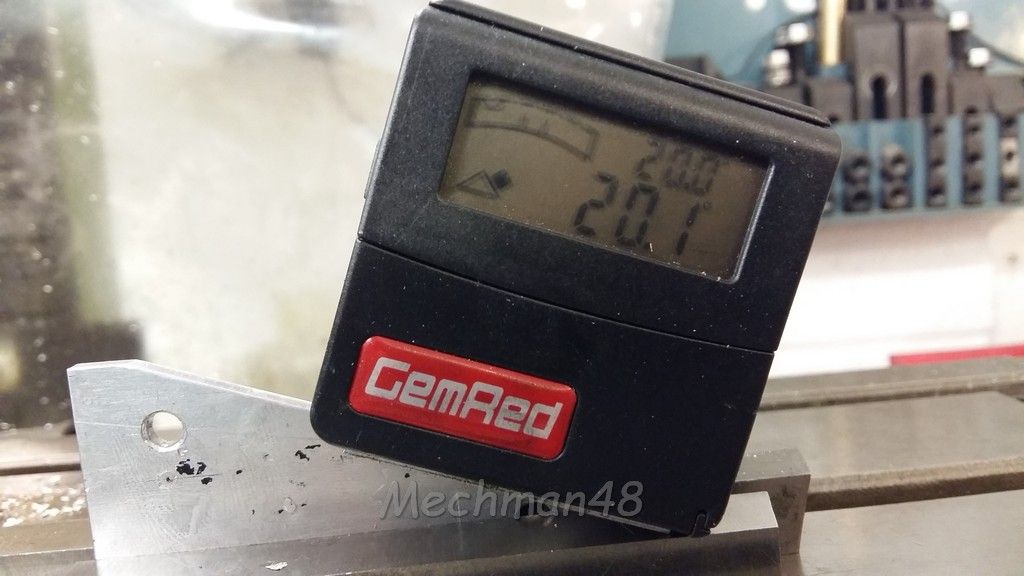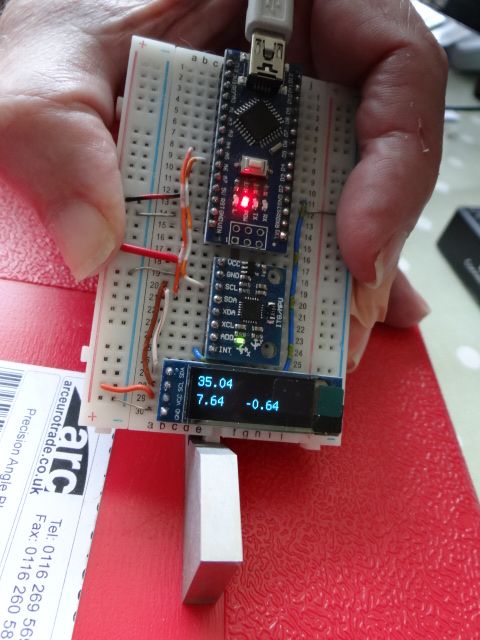A while back Neil compared a number of different Digital Calipers. I wonder if he could do the same with these devices? I have a cheap model, and so far it's performed well.
Checking Wixey specifications I see the original device claimed to be ±0.1° accurate whereas current models only claim ±0.2° accuracy. Being a suspicious old Hector, I suspect it's the same mechanism, and the original claim was optimistic, whereas the current figure is pessimistic. Either way, 0.1° isn't wonderful compared with other angle measuring techniques.
One thing I find iffy about some angle gauge specs is they mention repeatability rather than accuracy. Accuracy depends on the qualities of the mechanism whereas repeatability in digital displays may be a software feature. Common for digital scales to remember last time so sensor errors can be hidden by reporting the last value. That way the customer stays confident in his Bathroom scales because they're reassuringly consistent, even though the sensor is inaccurate.
As always with tools, what's it for? Though useful a Wixey-type gauge, whoever made it, is a relatively crude instrument, and buying the actual brand is unlikely to guarantee more precision. Paying more may get smoother operation, hopefully more robust, plus damp & dustproofing. The tool will be easier to use because it's trustworthy and it may last longer. These qualities are likely to be vital to professionals, but amateur work is less demanding. Pride of ownership is important to many amateurs, but that's not engineering. For occasional amateur use, inexpensive kit is often 'good enough', but not if one is easily frustrated!
Provided they're not cheap and nasty, inexpensive tools have other advantages. They release money for more purchases and it's far less upsetting when a low-cost tool is dropped on a concrete floor! And there's no psychological obstacle to replacing them when something better comes along.
I feel if you don't know why the expensive version of anything is needed, buying one just risks wasting money! On the other hand, if purchasing an inexpensive tool works out, you've won. If it doesn't work out, you understand what to look for in future. To my mind personal experience is better than buying a particular Brand just because someone else likes it, or hates foreign tools, or has an out-of-date understanding of the market, and above all doesn't know the needs of your workshop. This last is particularly dangerous for beginners – I didn't know anything when I started. I've made many mistakes, but failing to progress because I didn't buy the best possible tools isn't one of them.
Dave
Edited By SillyOldDuffer on 22/06/2020 11:07:09
SillyOldDuffer.







